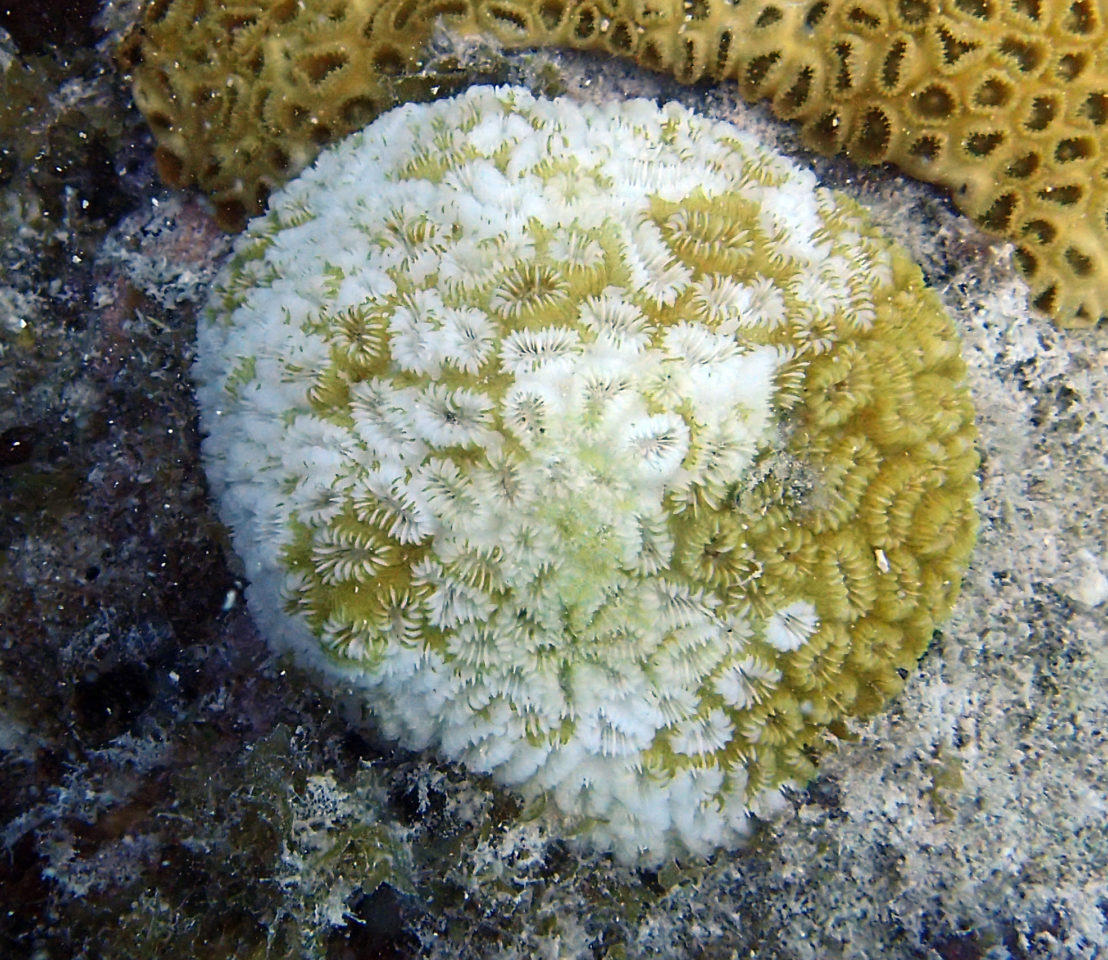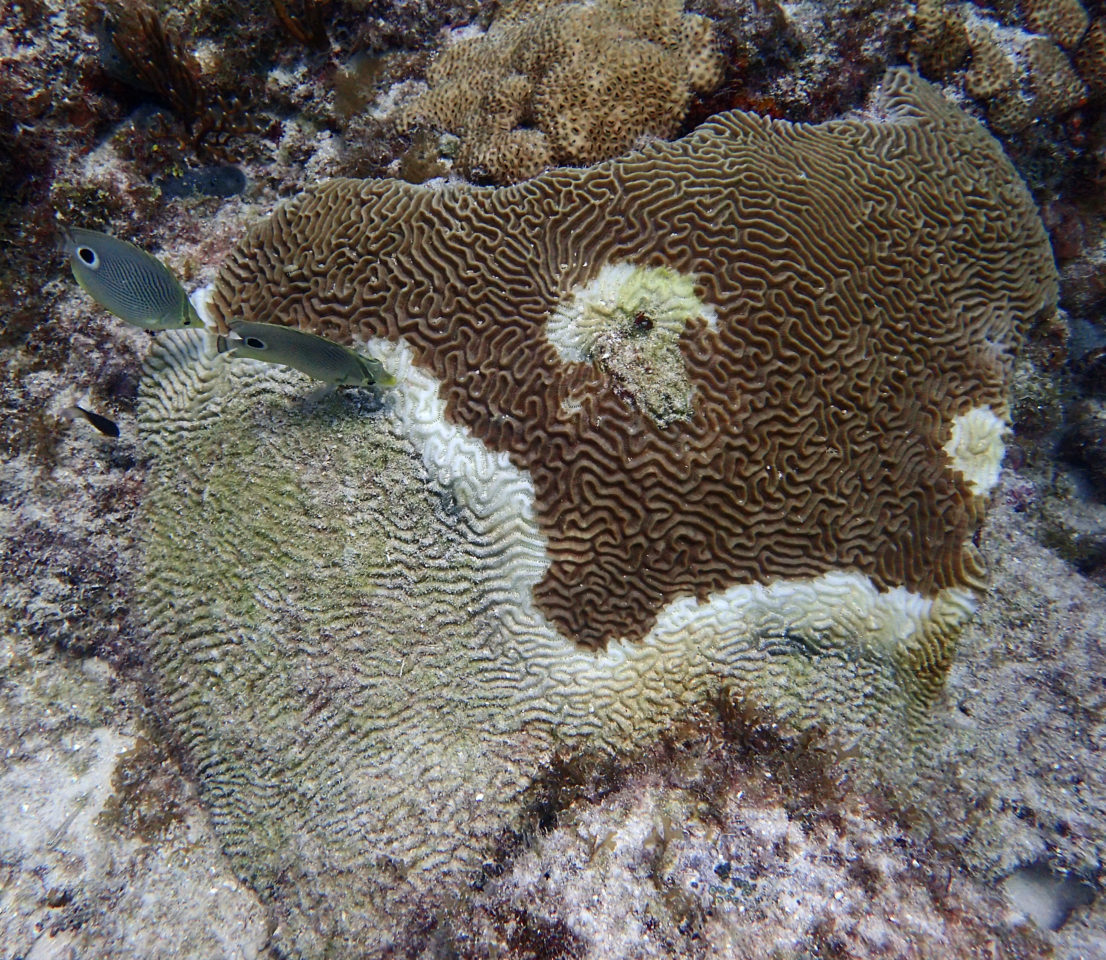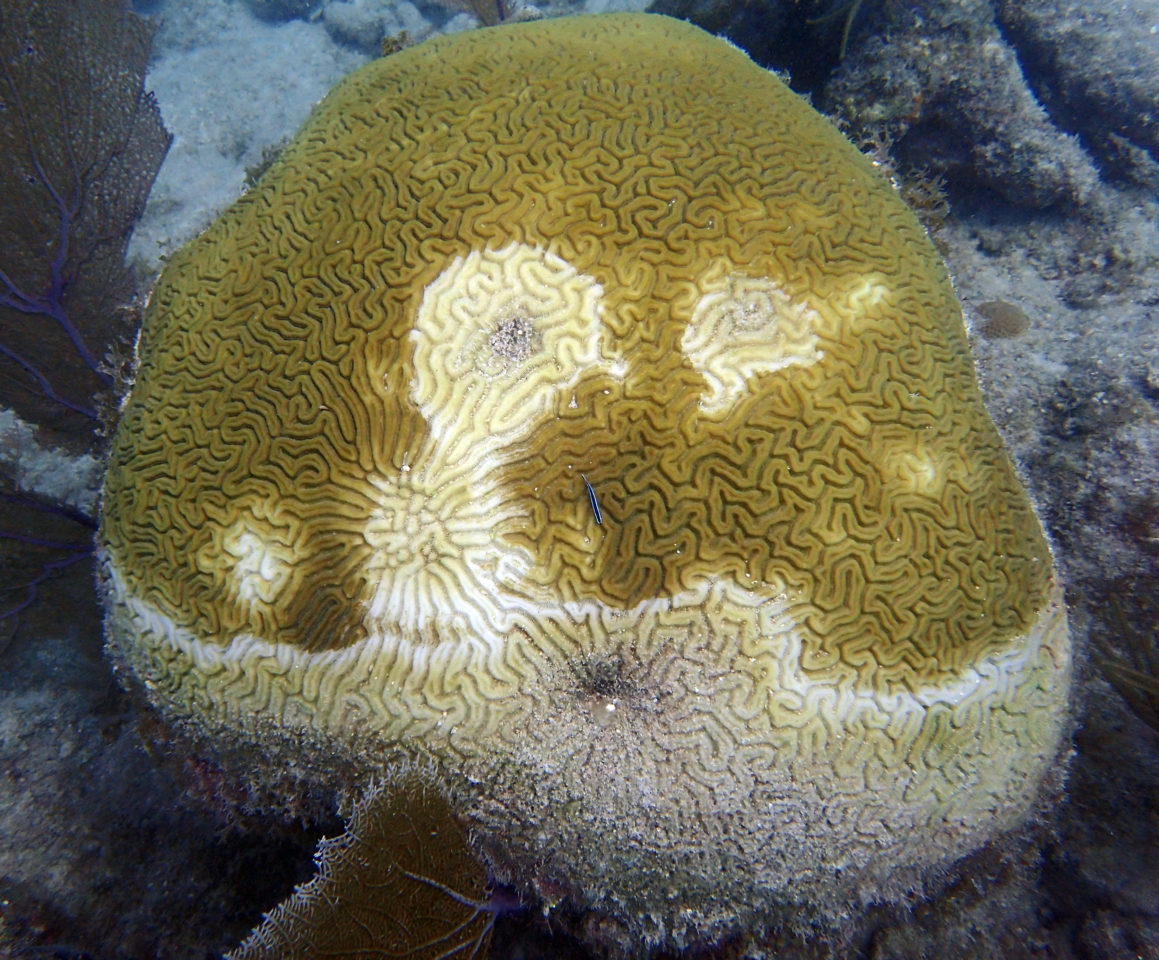A Disease is Ravaging Florida’s Coral Reefs
Published by Ocean Conservancy
We are more likely to get sick when we are stressed. The same logic applies to other animals. Stress leads to weakened system defenses, and this is true for Florida’s coral reefs.


Florida’s coral reefs are currently experiencing a multi-year outbreak of Stony Coral Tissue Loss Disease (SCTLD), a coral disease that first appeared off the coast of Florida in 2014. By 2019 it had spread along the Florida Keys and had appeared elsewhere in the Caribbean. The disease is currently ravaging Florida’s stony corals—scientists are worried and are working quickly to understand the disease better.
A number of known coral stressors were already present at the onset of SCTLD in Florida: Coral bleaching related to rising ocean temperatures; exposure to sediment and land-based sources of pollution; and physical damage. Ocean acidification is also likely affecting corals’ ability to create their hard structures. These additional stressors more than likely helped the disease gain a foothold.
Widespread Damage


Virtually the entire length of the Florida Reef Tract from Martin County to the Keys is affected. Although humans can’t get SCTLD, the disease is a coral reef’s version of the nightmarish flesh eating bacteria caused by Vibrio vulnificus, which people get on rare occasions. It is having such an impact that the science community is racing to rescue healthy coral specimens for use in future restoration efforts.
According to the National Oceanic and Atmospheric Administration, the Florida Reef Tract generates $8.5 billion annually and supports 70,400 jobs in South Florida. The reef system also buffers coastal communities from the full force of storms by absorbing wave energy. Yet, as the ocean undergoes rapid change, the economically and structurally important Florida Reef Tract is becoming increasingly stressed and more susceptible to disease.
We Need Healthy Corals
Maintaining healthy corals begins with understanding and reducing the chronic sources of stress that potentially trigger or worsen diseases such as SCTLD. What are these stressors? The most significant ones are rising ocean temperatures associated with climate change, ocean acidification, land-based nutrients from fertilizers or leaky septic tanks and physical damage from diving, fishing and boating. Storms like Hurricane Irma can also cause acute and widespread damage to coral reefs.
As ocean temperatures rise, corals are more prone to bleaching. Bleaching does not necessarily kill corals outright, but it weakens their resilience. If waters are too warm or cold, corals expel the beneficial algae called zooxanthellae (zo-uh-zan-THEL-lay) in their tissues, leaving them bleached white. Prolonged periods of high water temperatures during or following bleaching can kill corals. Bleaching events in the Florida Keys have mostly occurred when average summer sea surface temperatures exceeded a critical limit. The warmest winter and summer on record in the Florida Keys were in 2013-2014 and in 2014, respectively, coinciding with a bleaching event in summer 2014 and the first reports of SCTLD later that year.


Water quality is another problem. Corals are adapted to living in low nutrient waters. Land-based nutrients from human activities fuel harmful algal blooms (HABs) that sicken people and wildlife and impact coral reefs. Algae blooms release toxins and deplete oxygen from the surrounding water when the algae decay. Studies show that high nitrogen levels contribute to bleaching by interfering with the ability of zooxanthellae to nourish their coral host. The most significant human sources of nitrogen are fertilizers from residential lawns, golf courses, and farms; sewage discharges; and leaky septic tanks.
Florida’s Reef Tract is now eroding quicker than it is growing. The ocean absorbs 30 percent of the carbon dioxide emitted into the atmosphere. As a result, ocean chemistry is changing and becoming more acidic. Much of the decline in Florida Keys’ coral cover is due to the loss of live tissue resulting from bleaching and disease, yet it is probable that their erosion is exacerbated by acidifying seawater. Studies underway will clarify ocean acidification trends and extent.
All of these stressors are interacting in ways that may magnify their impacts on corals. For example, local nutrient loading might worsen ocean acidification in Florida’s bays and estuaries. Land-based nutrients fuel algae blooms that eventually decay, releasing CO2 into the water and making it more corrosive for animals such as corals that build hard parts or shells.
What Can We Do to Help?
An urgent need is decreasing the amount of land-based nutrients, particularly nitrogen, entering the ocean. Current priorities include avoiding over-fertilizing, or stopping fertilizer use altogether (especially during the wet season), upgrading sewage treatment plants to prevent overflows and helping residents switch from septic tanks to municipal sewer systems. Seagrasses can mitigate the effects of ocean acidification on corals by pulling carbon dioxide from the water for plant growth, so we need to maintain and restore this important carbon sink. Finally, we need to reduce carbon dioxide emissions to stabilize the climate and reverse trends in ocean warming and acidification.
Some Florida municipalities are leading by example. Key West began septic to sewer conversions two years ago and in early 2019 passed an ordinance banning sunscreens containing the reef-damaging chemicals oxybenzone and octinoxate.
Other communities have taken or are planning similar steps to reduce sources of stress on coral reefs. These actions are needed, welcome and cannot come soon enough.
Florida’s corals are crucial to the health of the marine ecosystem and the vitality of Florida’s economy. We must work together to research causes of SCTLD to identify solutions and act on them, as well as on other stressors that make them sick.
Sign up to never miss an ocean update
The post A Disease is Ravaging Florida’s Coral Reefs appeared first on Ocean Conservancy.
Read the full article at: https://oceanconservancy.org/blog/2019/09/09/disease-ravaging-floridas-coral-reefs/


